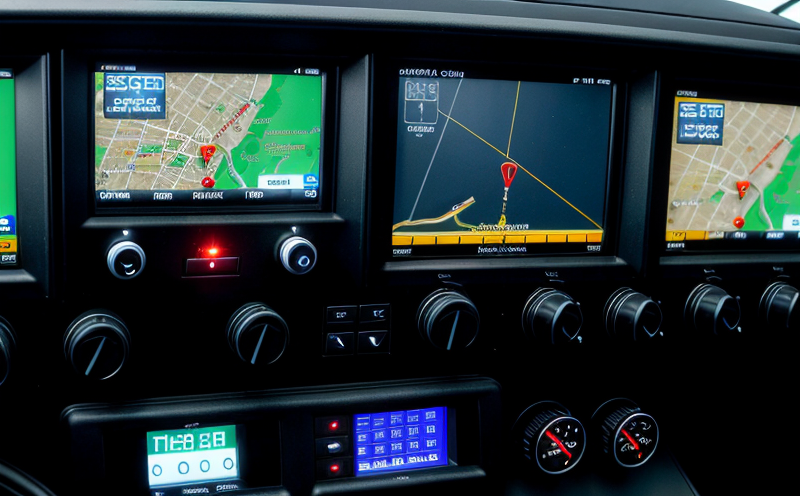IEC 62471 Photobiological Safety Testing of Marine Lighting
The International Electrotechnical Commission (IEC) standard IEC 62471 is a crucial document that ensures the photobiological safety of lighting devices. This standard specifically addresses the potential risks associated with exposure to light from luminaires and other sources, particularly in relation to human eyes and skin.
For marine environments, where harsh conditions can affect the longevity and performance of equipment, ensuring compliance with IEC 62471 is paramount for safety and reliability. This testing evaluates whether the emitted light poses a risk of photobiological damage or discomfort when exposed to human eyes under specified conditions.
The standard covers various types of luminaires used in marine applications, such as navigation lights, signaling devices, and interior lighting systems. By adhering to IEC 62471, manufacturers can ensure their products are safe for use by crew members and passengers aboard vessels operating in international waters.
The testing process involves subjecting the light source or luminaire to a series of photometric measurements under controlled conditions that simulate real-world exposure scenarios. These include evaluating blue-light hazard (BLH), UV-A, and other relevant parameters defined within IEC 62471. The goal is to determine whether there are any risks associated with prolonged or accidental exposure.
One key aspect of this testing is the use of spectral irradiance measurements which quantify the amount of radiant power emitted by the light source across different wavelengths. This data helps in assessing the potential for phototoxicity and discomfort caused by blue light, particularly at wavelengths around 450 nm where human vision sensitivity peaks.
Another important parameter is the threshold limit value (TLV), which represents the maximum permissible exposure level without causing adverse effects on health. Compliance with these limits ensures that even under worst-case conditions, the emitted radiation does not exceed safe thresholds set by IEC 62471.
Additionally, the standard also considers temporal factors such as viewing time and frequency of exposure when determining photobiological safety. This means that short bursts of intense light may be tolerated if they do not exceed allowable limits over longer periods.
- Key Parameters: Blue-light hazard (BLH), UV-A, temporal factors like viewing time and frequency.
- Testing Methods: Spectral irradiance measurements, threshold limit value (TLV) calculations.
- Compliance Metrics: Ensuring all measured values fall below specified limits outlined in IEC 62471.
In summary, the implementation of IEC 62471 photobiological safety testing ensures that marine lighting systems are designed and manufactured to safeguard human health while maintaining optimal functionality. This not only protects personnel aboard ships but also contributes positively towards enhancing overall maritime safety standards globally.
Benefits
Compliance with IEC 62471 photobiological safety testing offers several significant benefits for manufacturers, regulatory bodies, and end-users alike. Primarily, it ensures that all marine lighting products meet stringent international standards, thereby reducing the risk of adverse health effects due to overexposure to certain wavelengths of light.
From a manufacturing perspective, adherence to these regulations demonstrates commitment to quality control and safety practices. It helps in maintaining a good reputation among consumers who prioritize product safety above all else. Furthermore, it can open up new markets by overcoming regulatory hurdles associated with different countries' requirements.
For regulatory bodies, implementing IEC 62471 ensures consistency across various jurisdictions, which simplifies enforcement efforts and promotes uniformity in safety standards worldwide. This contributes significantly to reducing incidents related to improper lighting installations or usage, thus protecting public health and safety.
Lastly, from an end-user standpoint, knowing that their product has undergone rigorous photobiological testing instills confidence in its reliability and suitability for use under challenging marine conditions. Users can be assured that they are not only receiving a safe product but also one that meets globally recognized benchmarks.
Quality and Reliability Assurance
The process of IEC 62471 photobiological safety testing plays a crucial role in maintaining high levels of quality and reliability within marine lighting systems. By rigorously evaluating the emitted light, manufacturers can identify potential issues early on during development stages rather than after products have been deployed.
This proactive approach allows for continuous improvement through iterative design processes based on feedback from tests conducted according to IEC 62471 guidelines. It also enables better allocation of resources towards addressing specific areas needing enhancement, ultimately leading to more robust and dependable lighting solutions.
Moreover, consistent adherence to these standards helps prevent costly recalls or product modifications later down the line by catching deficiencies before they become critical defects. This not only saves money but also enhances customer satisfaction as there are fewer instances of non-compliant products reaching market shelves.
In addition, reliable testing ensures that all components of a lighting system work together harmoniously without causing any unintended interactions or anomalies when exposed to natural environmental elements like salt spray or humidity. Such harmonization is essential for maintaining long-term performance and durability under the harsh conditions prevalent in maritime settings.





